The only plan for today was to continue looking around Shrewsbury, a task we took up as soon as we had finished the "full English" breakfast provided by our hotel. A full English is,
of course, an egg, back bacon (as opposed to "streaky bacon" that we are used to; this is like a slice of country ham without the country), a somewhat-cooked tomato, sautéed mushrooms, black pudding (the same as blood sausage but with a better PR team) and toast. It also often includes baked beans though those were not on offer this morning. It was very good other than the black pudding for which neither of us has developed a taste. Seriously, animal blood and parts and some grain. We were able to get a slab of hash browns to fill our culinary gap.
Our tour today was guided by Brother Cadfael. Before we left Alaska, Phyllis had located a pamphlet that described many of the locations mentioned in the book series and how to see
them. Because Ellis Peters, the author, had done such a good job of researching historic Shrewsbury and incorporating real sites into the books, the booklet really did a pretty thorough job of taking us by most of the historic places one would want to see. Combined with our more general walkabout yesterday along the river path and through the town center, we felt we would have a fairly comprehensive look at Shrewsbury through the ages.
We began, of course, at the Shrewsbury Abbey which, although a shell of its former self, still stands in the form of the abbey church of St. Peter and St. Paul. The abbey was founded by Roger de Montgomery in 1083 on the heels of William the Conqueror's takeover. Earl
Roger was one of the Conqueror's chief commanders and was amply rewarded with property and titles in Shrewsbury, Shropshire and Essex. With such a patron, the abbey was large and prosperous by the time of Cadfael (about 1135-1145). For the ensuing centuries the abbey mostly prospered as a large complex with dormitories, gardens, a refectory, guest hall and so forth. Unfortunately, as with so many other abbeys, King Henry VIII, as part of his efforts to take the abbeys' wealth, dissolved them resulting in significant destruction. In the case of the
Shrewsbury Abbey this meant that the only significant structures still standing are most of the main church (the two transepts which form the arms of the cross-shaped floor plan were destroyed) and a stone pulpit from the refectory which now stands alone across the street in a parking lot.
After looking around the abbey, we decided to take a break from the historical trail to look for a chocolate Easter bunny. After all, tomorrow would be Easter Sunday and traditions must be upheld. The search took more time and distance than expected; we really need to stop waiting until the last minute to acquire the bunny. We have been burned by this before,
but learn slowly. After our eventual success we went to the Coleham Tap, a pub we had noticed on our walk yesterday that sits on a bluff above the river. The pub got fairly good reviews and we felt the beer was mediocre, the food fairly good, and the view outstanding. Part way through our meal we noticed a swan lazily floating past the pub. For no apparent reason he suddenly got motivated and with a great squawk began to fly (sort of, he never really got out of ground effect). He was huge when he stretched out in the air and exuded power. It was really impressive to see, but unfortunately happened too quickly for a photo op.
Continuing the search for all things Cadfael after lunch, we visited the remains of the old Church of St. Chad, the city walls, the castle and St. Mary's Church in addition to the cross in the center of town where important notices were read and miscreants hung. It was a full day and, after two days and 11.5 miles wandering around Shrewsbury, we felt we had seen what we needed to see and repaired back to our room for a cup of the last of our Madeiran hot chocolate. Tomorrow we move on to Stonehenge as we continue to make our way east back to Gatwick Airport and the start of our journey home.

 Shrewsbury, England, United Kingdom
Shrewsbury, England, United Kingdom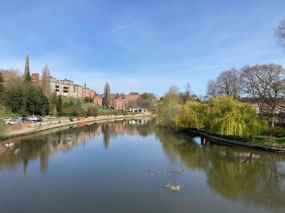
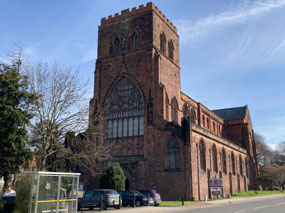
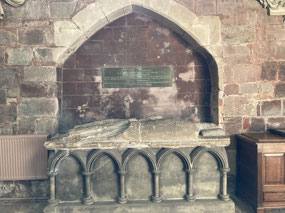
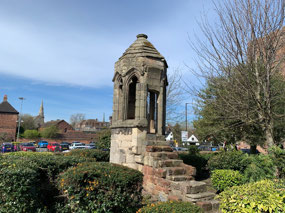
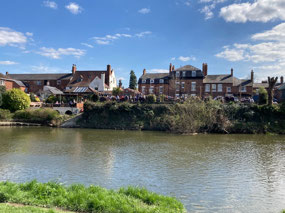
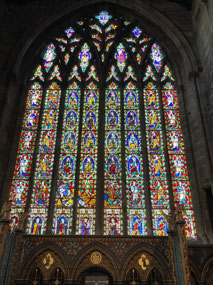


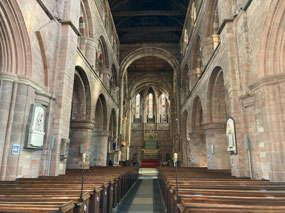
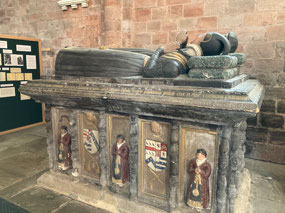
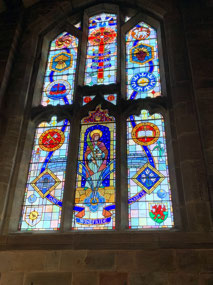

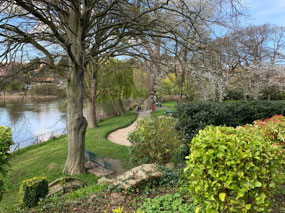
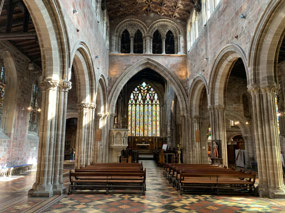
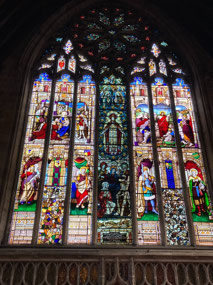
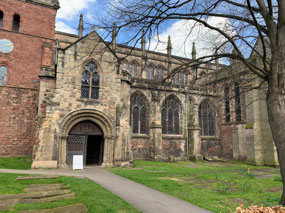
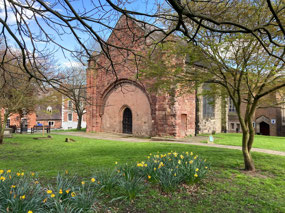

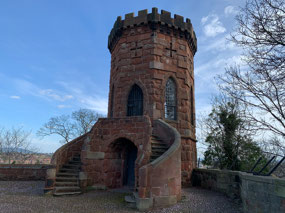

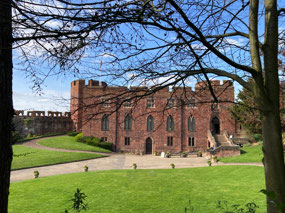
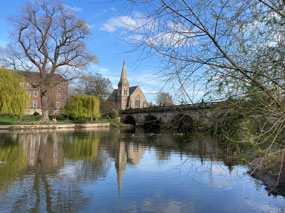
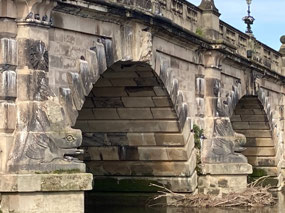
2025-05-22